
Scientists at work: bridging the divide between development and conservation in Cambodia
(MENAFN- The Conversation) Gentle groans of cattle gradually woke me from my slumber. It had been another hot, humid night spent shuffling to sleep on wooden slats – my three research assistants had adopted hammocks, but I simply couldn't stand being surrounded by polyester in 35°C. Even at 4am, it was just too hot. Above me, the deep fiery hue of dawn spanned the sky as far as the eye could see. Swifts swept in among the palms, clearing the skies in a feeding frenzy.
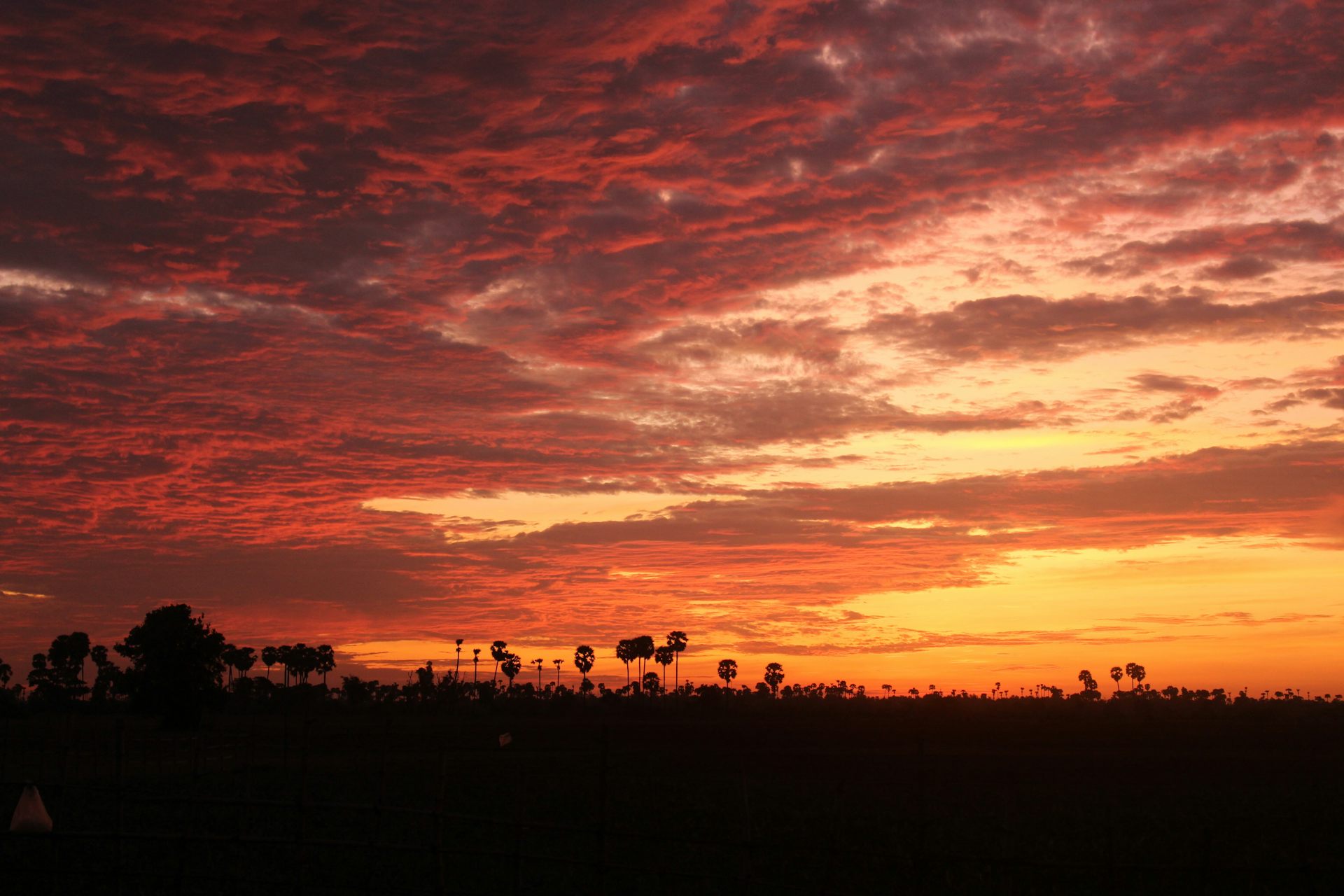
Sunrise on the floodplain.
© Harriet Ibbett
I'd been in Cambodia six weeks, and this was one of the last villages left to survey. I was researching the impact of local communities' livelihoods on a critically endangered bustard species; theBengal florican(Houbaropsis bengalensis). Fewer than 1,500 florican remain globally, over 60% of which seasonally reside in the grasslands of Kampong Thom province, central Cambodia.
Male florican are distinctive. If you're lucky, between February and April you may spy their beautiful black and white bodies leaping 30 metres into the air; performing to impress shy females. However, opportunities for encountering such moments are increasingly rare.In recent decadesflorican have undergone dramatic population declines, initially driven by over-hunting, but now by widespread habitat loss, primarily due to rice cultivation.
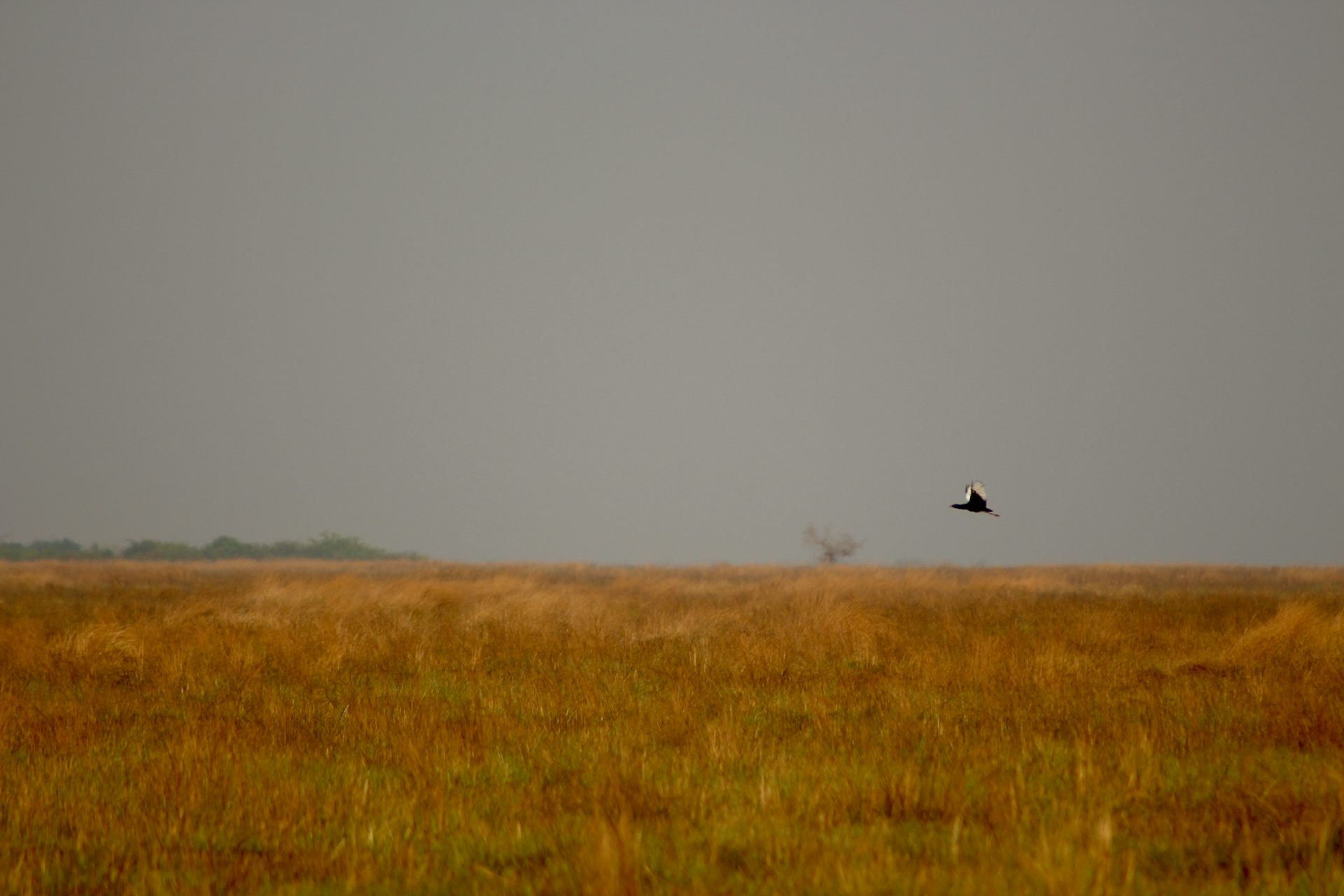
A florican flying in the distance.
© Harriet Ibbett
People I've met typically assume my time is spent in vast vistas, surrounded by swathes of jungle, spotting exotic wildlife. For me the reality is sleeping on a plank alongside cattle, surrounded by farmlands. I'm a member of theInterdisciplinary Centre of Conservation Scienceat Oxford University, and unlike typical ecological or biological approaches to conservation, we use a broad range of techniques developed from disciplines as varied as sociology, anthropology, psychology and economics to enhance understanding of complex socio-ecological systems. My research in Cambodia,recently published in Oryx , is reflective of our lab as a whole; instead of spending time in the field monitoring wildlife, we usually work in communities, trying to understand human behaviour.
Floodplain fieldwork
My team and I travelled by motorbike from village to village along dusty dirt roads. We spent a short time in each village conducting household surveys with a wide variety of people in a bid to better understand how communities live, and how their activities overlap with surrounding grasslands. Sometimes we were invited into peoples' homes; others we sat beneath their stilted houses, perched on wooden beds or plastic chairs. Around our feet scabby puppies and occasionally piglets snuffled, grunted and squealed.
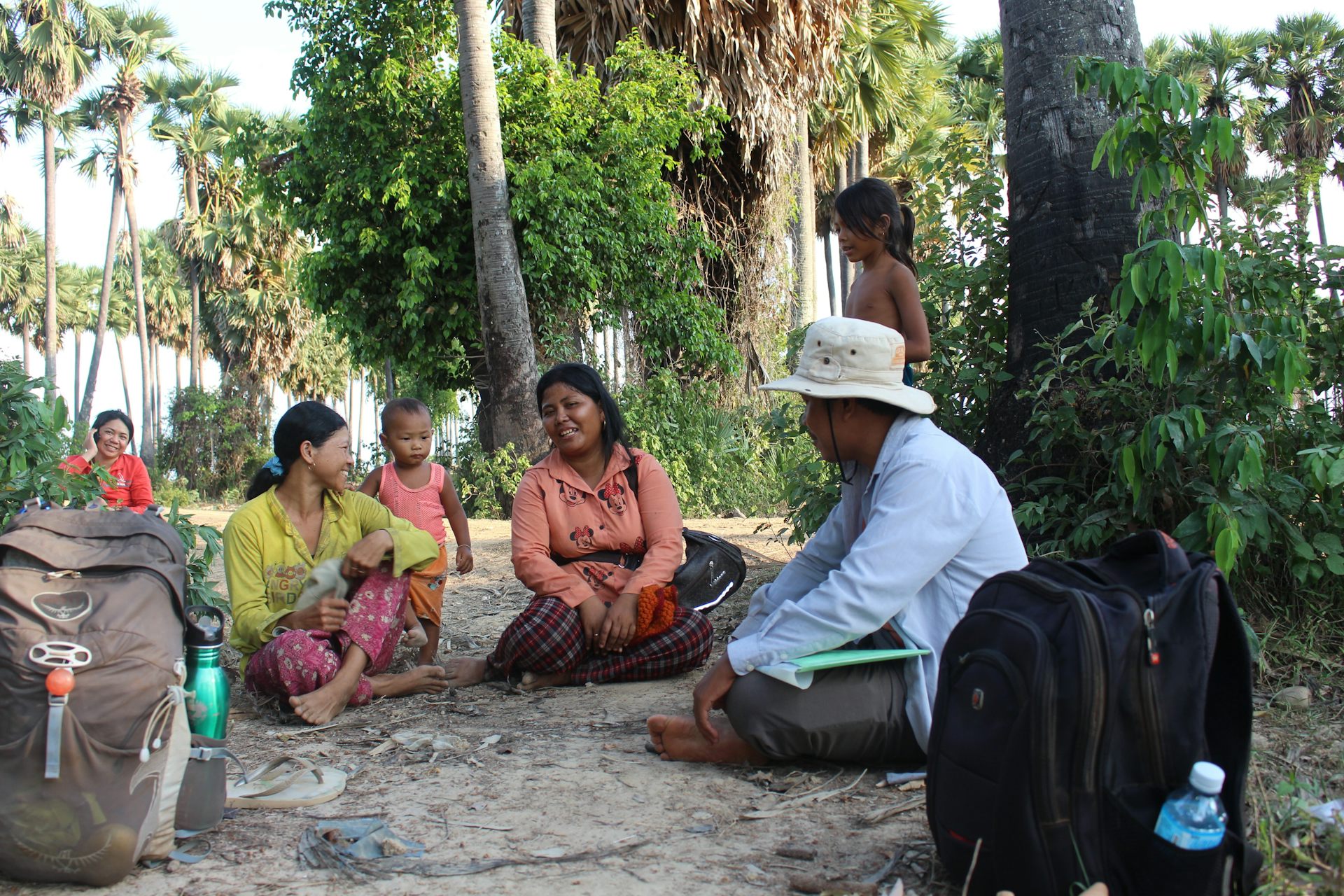
Interviewing local people.
© Harriet Ibbett
Agriculture has long played a role sculpting the landscape of central Cambodia, with rice cultivated on the floodplains since the Empire of Angkor (c.800-1400AD). But over the last two decades the production of rice has intensified. Whereas once rice was only grown for subsistence in wet season, usually in paddies naturally inundated by seasonal floods, nowadays rice is also grown throughout the dry season in newly converted fields, primarily for commerce. Great reservoirs and canal networks sprawl across the landscape, carved where grasslands once were. Across the dusty floodplain, dry season rice fields glow like green irrigated iridescent beacons.
Large scale dry season rice productionemerged at the turn of the millennium , initially driven by profiteering businessmen. From my interviews I learned that this practice is nowwidespread among local communities , with nearly half of all households capitalising on the infrastructural investments made by urban elites to cultivate dry season rice. Koyuns, small hand-driven tractors, can be seen dotted alongside channels, extracting water. Plastic, python like tubes pump water back to paddies to grow this perceived 'green gold'.
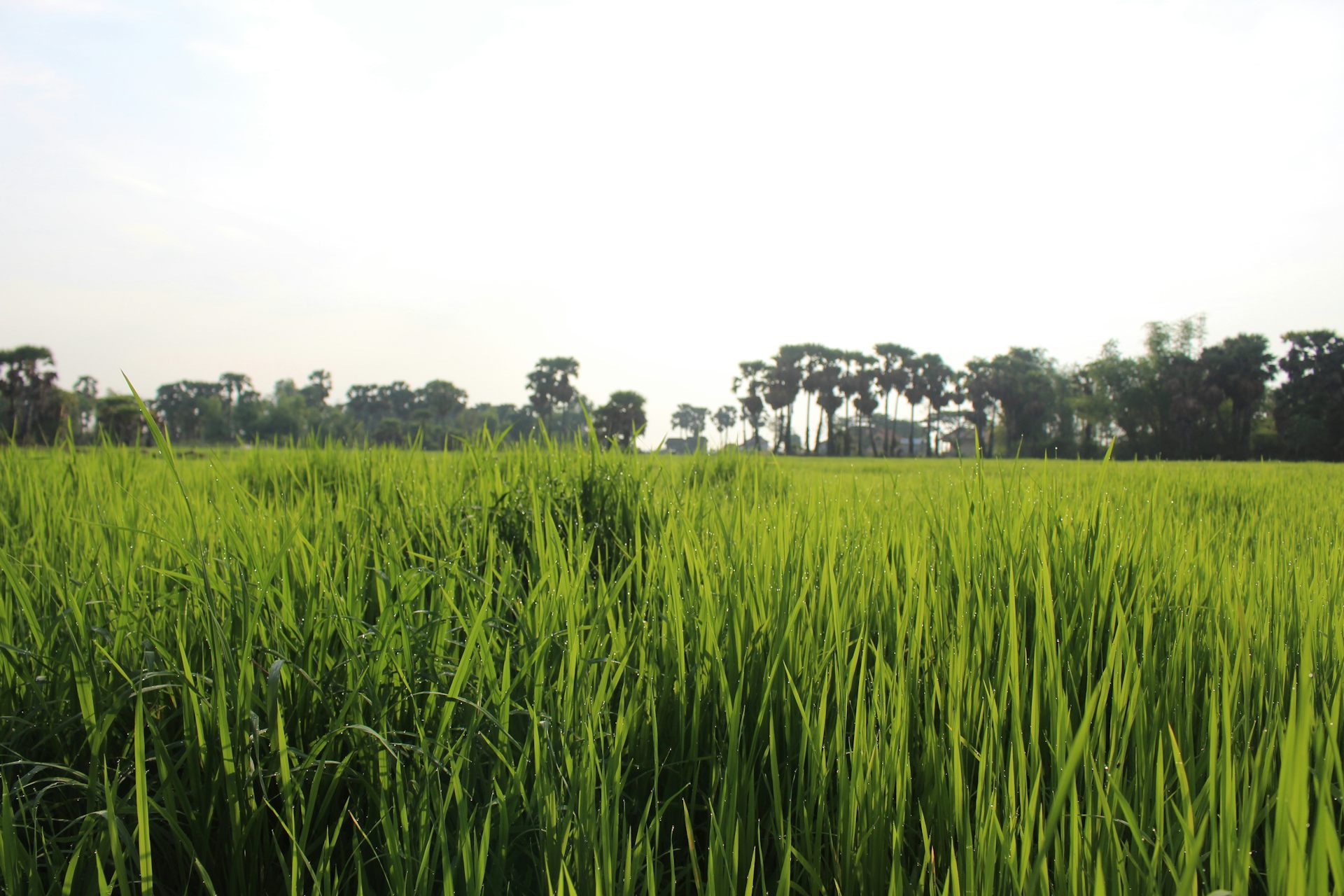
Dry season rice.
© Harriet Ibbett
It was believed dry season rice was typically grown between December and March. However,my interviews revealedthat nearly half of all dry season rice farmers now farm two crops of rice a year, extending the rice cultivation season into June. This is a relatively recent and previously undocumented trend, with significant implications for florican, who visit grasslands from February to July. Expansion of dry season rice not only means less habitat is available for floricans to forage and breed, but it also reduces the time for which it is available. Floricans return to the same large territories each year to mate. This means the miniscule populations that remain are likely returning to increasingly sub-optimal habitat.
In addition, around 95% of the dry season rice farmers I spoke to said that they use fertiliser or pesticides on their crop. Many have to borrow money in order to do so, and sometimes if their crops fail or the market collapses, they may find themselves indebted to credit lenders, forced to sell land to clear their debts. There are also considerable environmental and ecological implications. Agro-chemicals not onlyreduce food availability , but they typically include substances banned in the West, including DDT, a chemicalknown to cause egg thinning in birds . Fertilisers also filter into groundwater, impacting food webs. This is highly concerning, especially given the proximity to theTonlé Sap , the largest inland fishery in Cambodia, and the lifeline of many throughout the land.
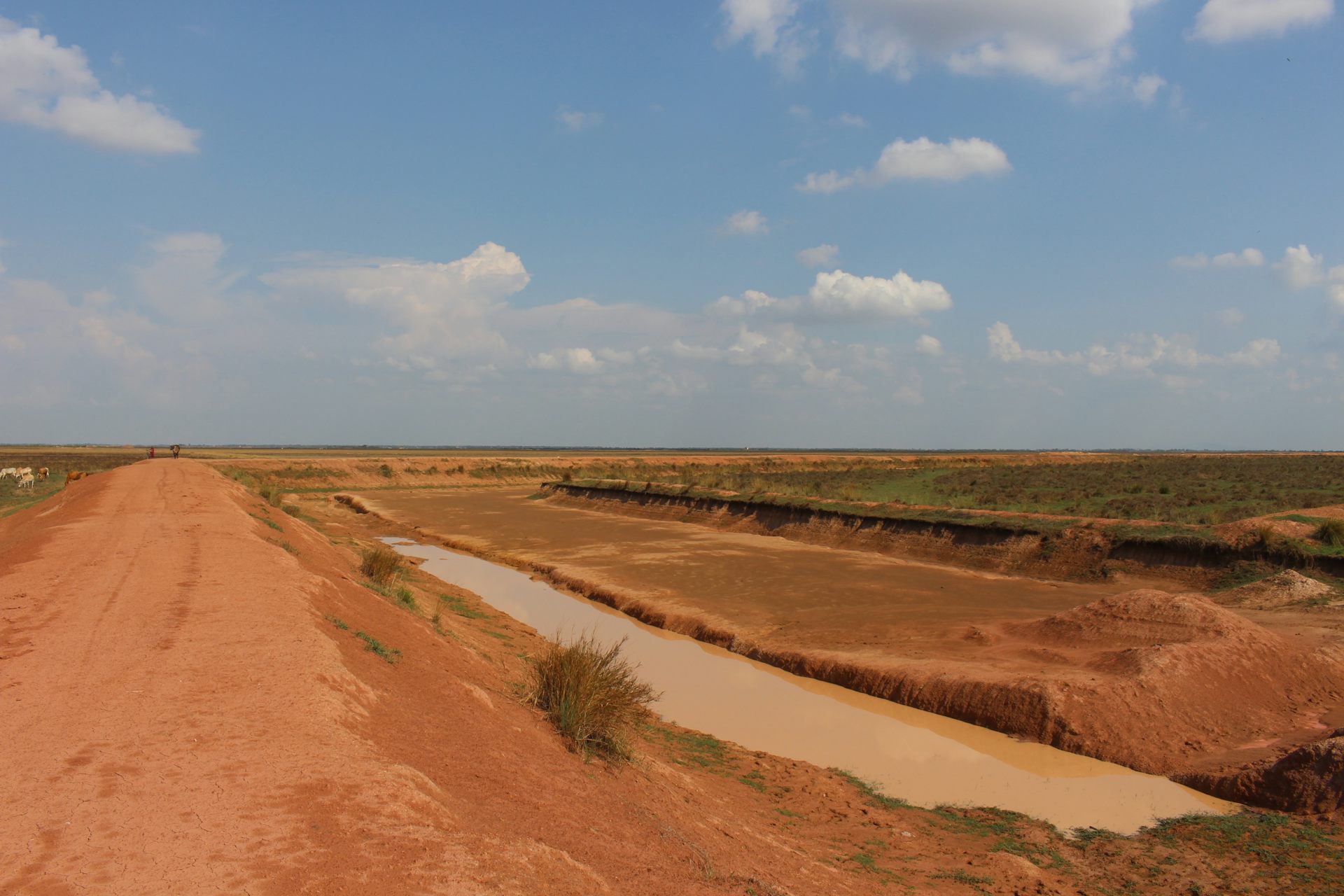
Dry season rice reservoir carved out of the floodplain.
© Harriet Ibbett
Conservation's future
Conservation is complex, and we live in a rapidly changing world. Whereas once people measured their prosperity, health and happiness against that of their neighbours, today the advent of social media and the internet means that people compare themselves to others across the world. Nearly a half of households I surveyed had children that had left home to seek prosperity in the factories and sweatshops of Phnom Penh and Thailand.Priorities have changed . More of my interviewees owned a mobile phone (87%) than had access to a toilet (just 36%). Understanding how these changing priorities affect natural resource use is critical to the success of global conservation efforts.
For this reason, we also hosted focus groups in each village, bringing people together to discuss both conservation and options for the future. We asked about local perceptions of conservation work in the area. Some were unaware of conservation activities, whereas others applauded efforts – these were usually communities that had seen some returns from tourism. Others resented the limitations conservation placed on their livelihoods, citing too many costs and too few benefits.
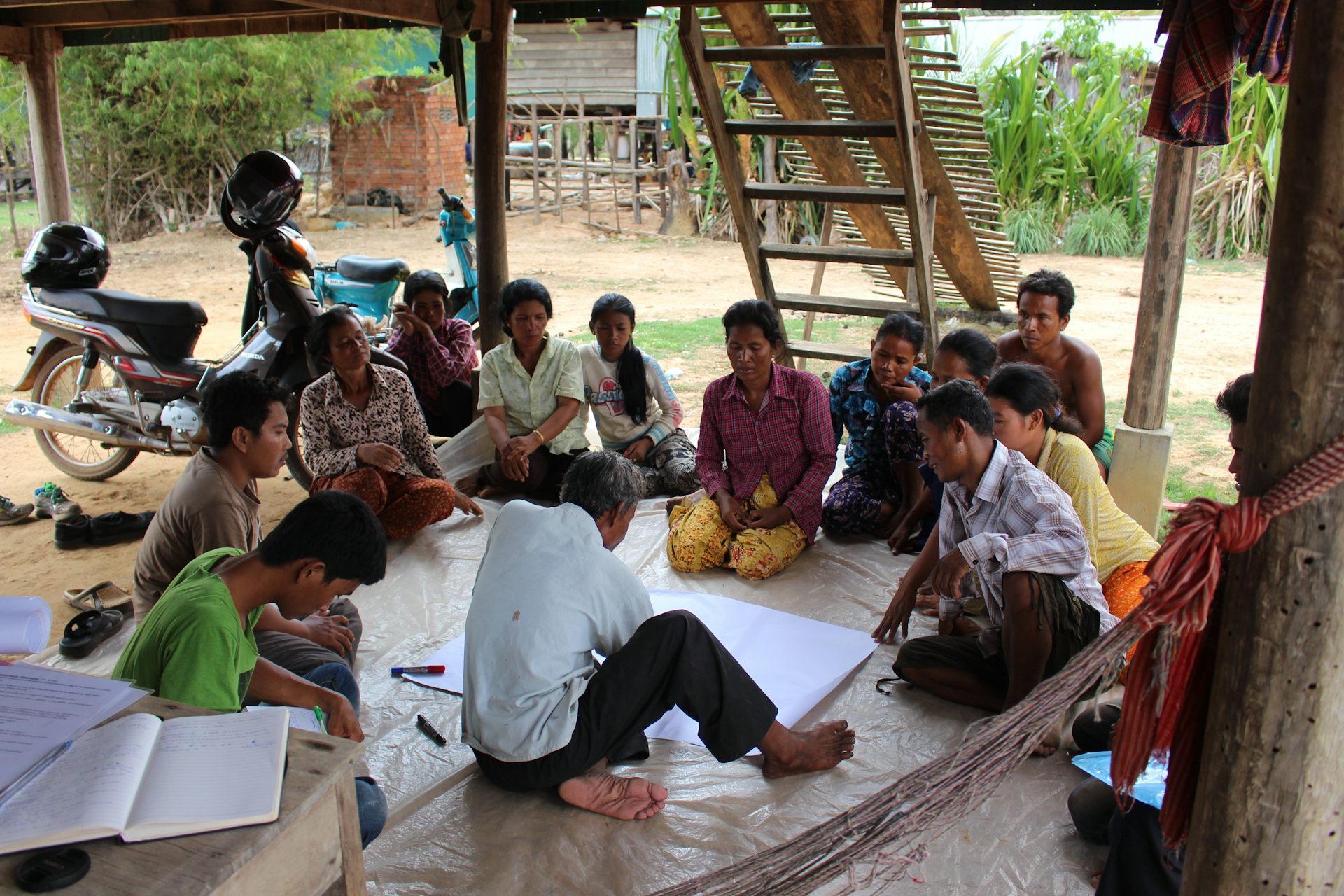
Focus group.
© Harriet Ibbett
If we are to successfully secure both the livelihoods of local people and the future of endangered species, then it is essential conservation is reconciled with development. One such medium is theSustainable Rice Platform , an industry led initiative that encourages production of rice that meets sustainability standards. These include measures for protecting biodiversity, reducing pollution, gender equality, and supporting fair wages. In return, farmers that are supported to meet the standards receive stable, premium prices for their crop.NGO Wildlife Conservation Societyare now piloting this in some surveyed villages.
It is clear that typical biological approaches are no longer enough. Too often conservation is filled with doom and gloom; relying on research that counts species to extinction. Instead, interdisciplinary, social research that engages local communities should be the norm. Luckily, I am not alone in this belief: there is a growing generation of conservationists for whom this is and always will be the way conservation is done.
Conservation
Development
Farming
Birds
Rice
Cambodia
Scientists at work
Globalisation
Interdisciplinarity

Legal Disclaimer:
MENAFN provides the
information “as is” without warranty of any kind. We do not accept
any responsibility or liability for the accuracy, content, images,
videos, licenses, completeness, legality, or reliability of the information
contained in this article. If you have any complaints or copyright
issues related to this article, kindly contact the provider above.

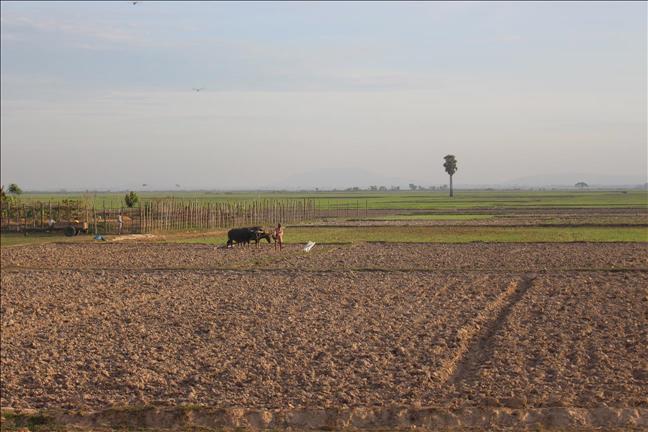















Comments
No comment